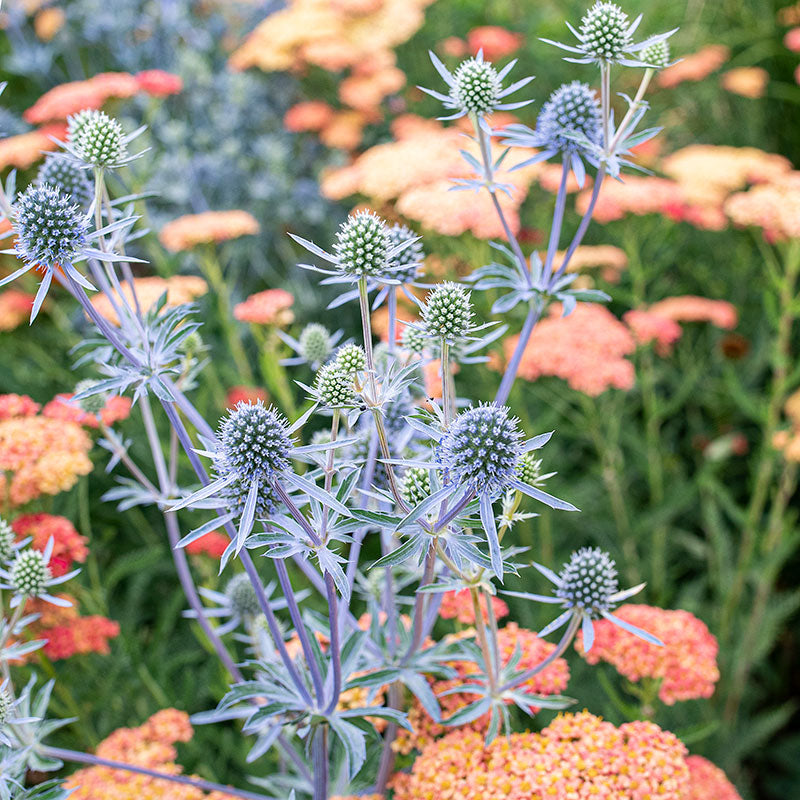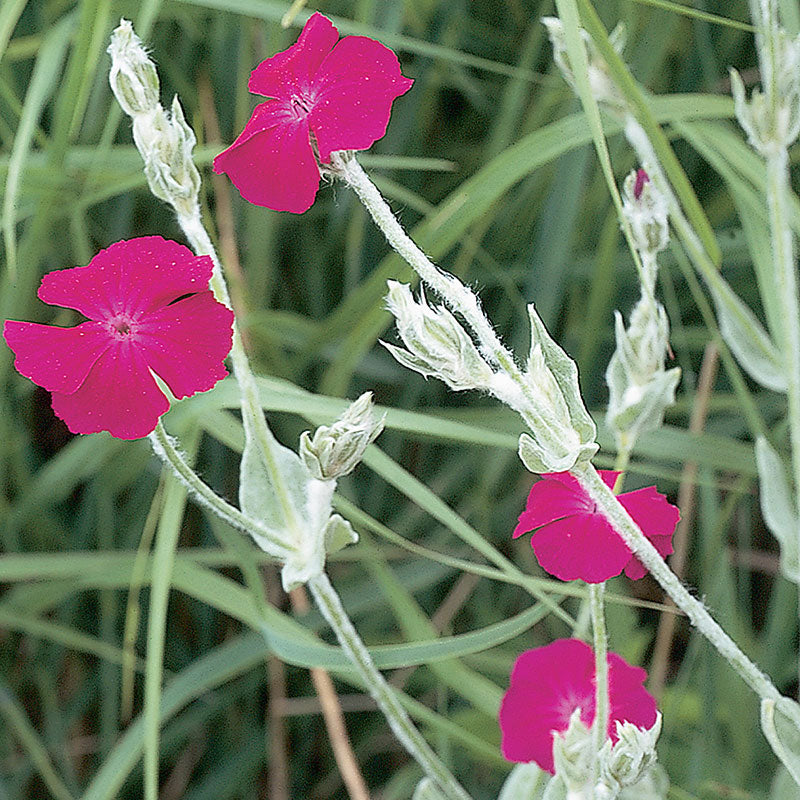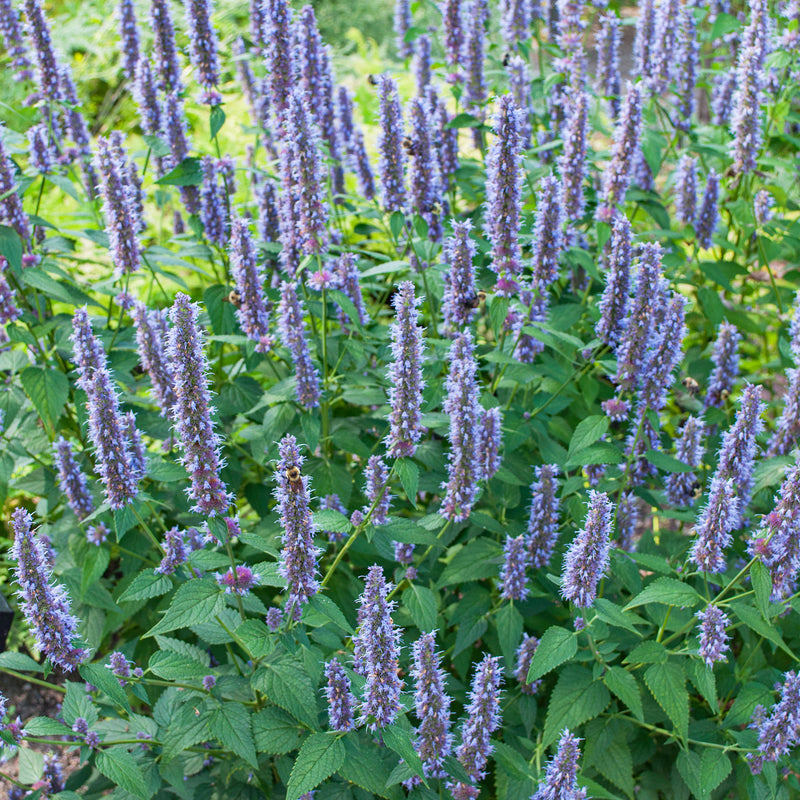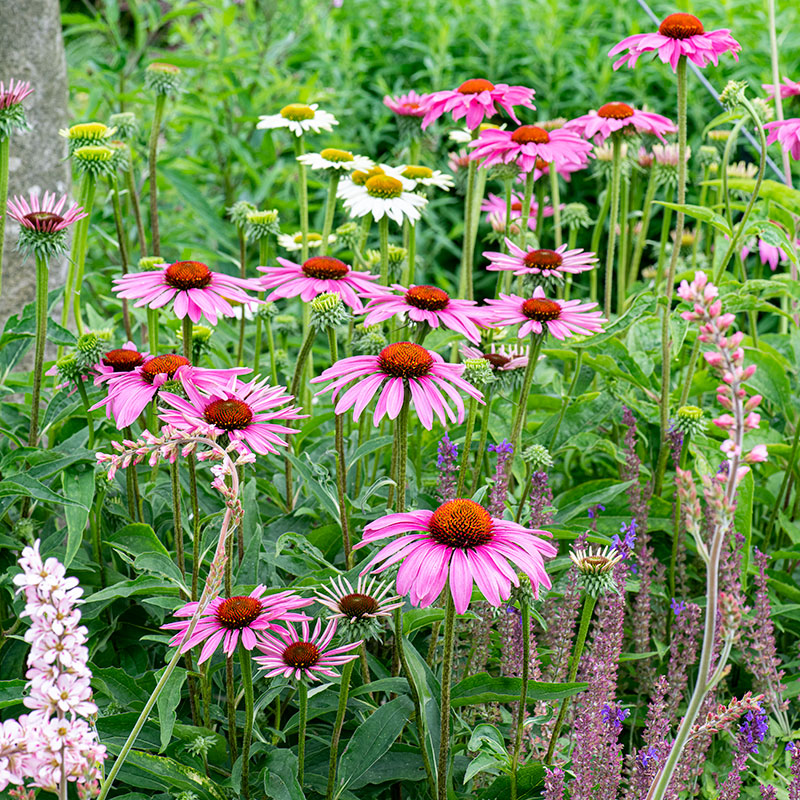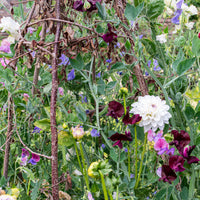SOWING INSTRUCTIONS
Depth:
Surface sow; requires light for germination.
Starting Indoors:
Recommended. Sow in pots 10-16 weeks before last frost. Keep at 70-75°F until germination occurs, then at 55-60°F. If no germination after four weeks, cover with plastic and place in refrigerator for about four weeks, then bring back into warmth. Bottom water or mist seeds to avoid covering them with soil when watering.
Starting Outdoors:
Direct sow in fall or earliest spring, or winter sow into pots in the shade, covered with a thin layer of clean sand and a wire screen to keep out mice and voles. Check for moisture at regular intervals.
WHEN TO SET OUTSIDE
This mid-to-late summer bloomer can be set in the ground in spring after all danger of frost has passed. Take care not to disturb the root system upon transplanting.
PLACEMENT & CULTIVATION
Sea holly 'Blaukappe' (Blue Cap) blooms profusely in summer, attracting numbers of diverse pollinators such as bees and wasps. It is perfectly matched with drier garden areas, popular planted in xeriscaping and gravel gardens, plus more fertile perennial borders. Sprinkle some fine gravel around the crowns to allow proper drainage during wintertime. Do not divide; this plant has a taproot that should not be disturbed once established.
Watering Details:
Water regularly while establishing, then only during especially dry, hot spells. Do not allow to remain wet, especially during winter months.
Soil pH:
Prefers acidic to neutral soils.
Fertilizer:
Do not fertilize during the first year of establishment. Subsequently, apply an organic granular fertilizer or a 1/2" layer of compost every spring.
Diseases & Pests:
No major pests or diseases. If aphids appear, spray plants down with a stream of water or spray with insecticidal soap. Occasionally, slugs or snails may be a problem—apply pelletized iron phosphate or some diatomaceous earth to the surrounding soil.
When to Cut for Bouquets:
Harvest when flowers are fully open.





































